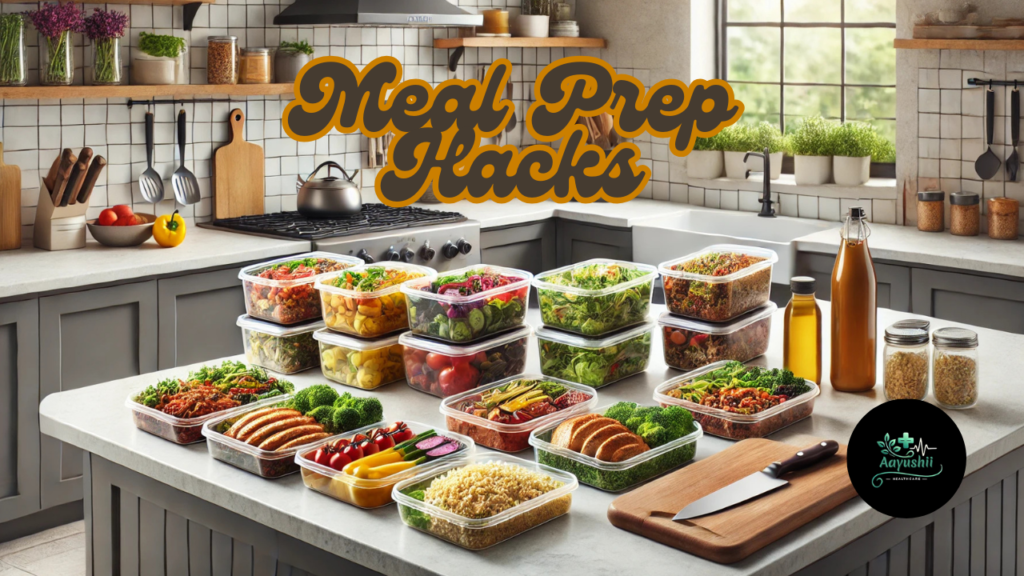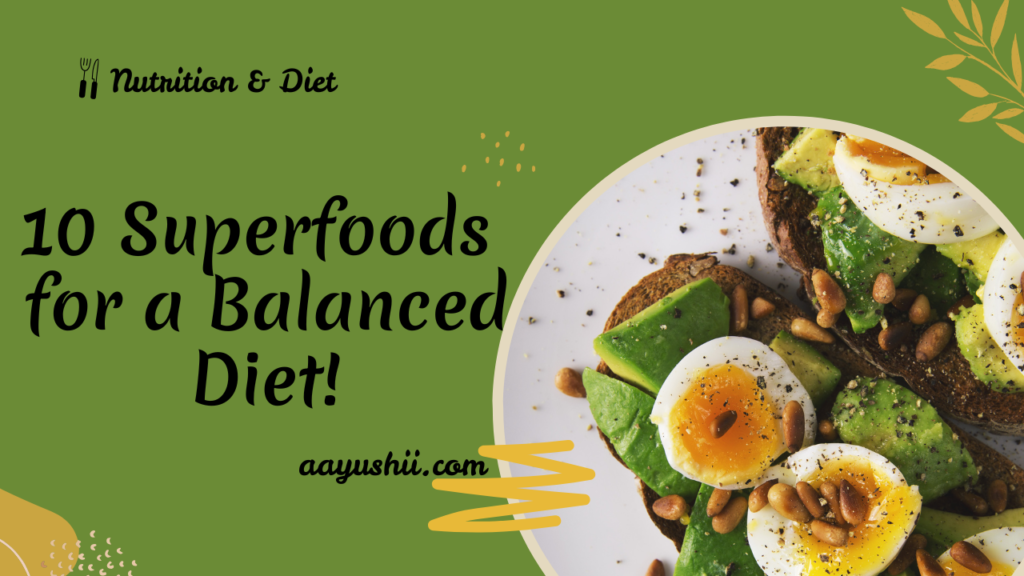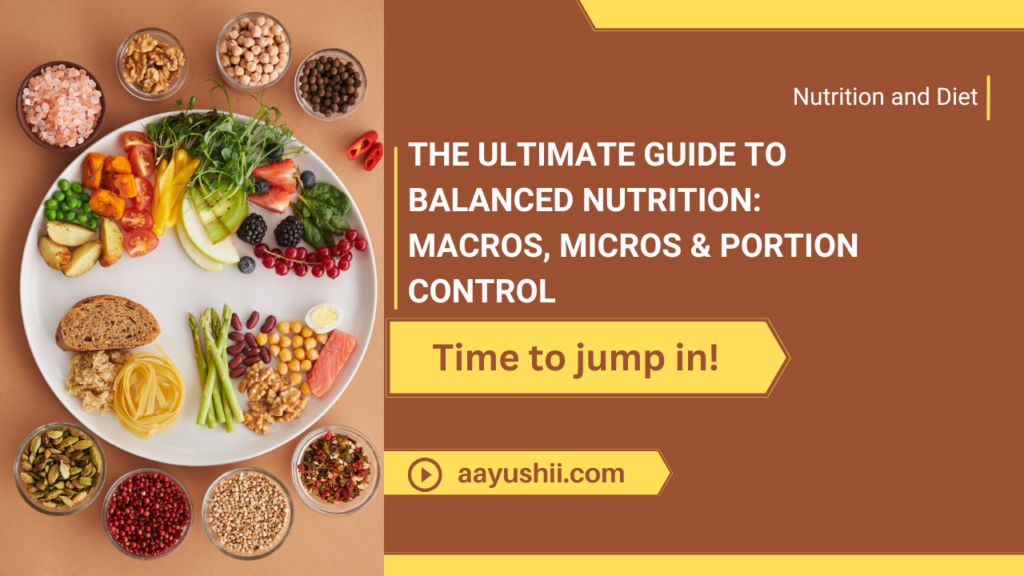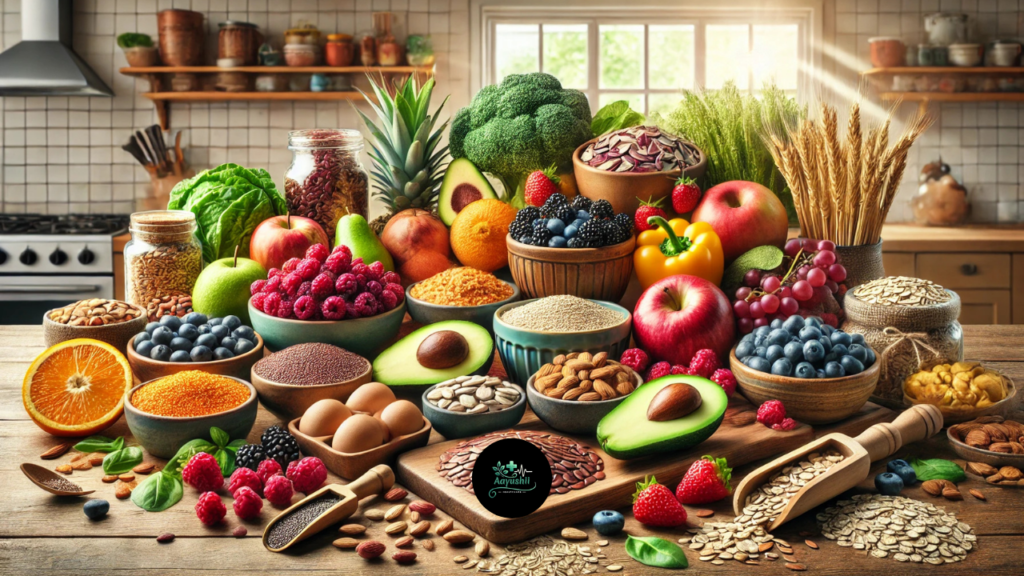Meal prepping has become a buzzword in recent years, and with good reason. It’s an effective way to eat healthier, save money, minimize stress, and—perhaps most importantly—save time in the kitchen. If you’ve ever found yourself getting home after a long day and settling for fast food or takeout because you’re simply too tired to cook, then meal prepping might just be your new best friend.
In this comprehensive guide, we’ll delve deep into everything you need to know about meal prep hacks, from setting goals and planning balanced meals to ensuring your food stays fresh throughout the week. By the end, you’ll have a thorough understanding of meal prepping and actionable tips to implement right away.
Table of Contents
1. Why Meal Prep Matters
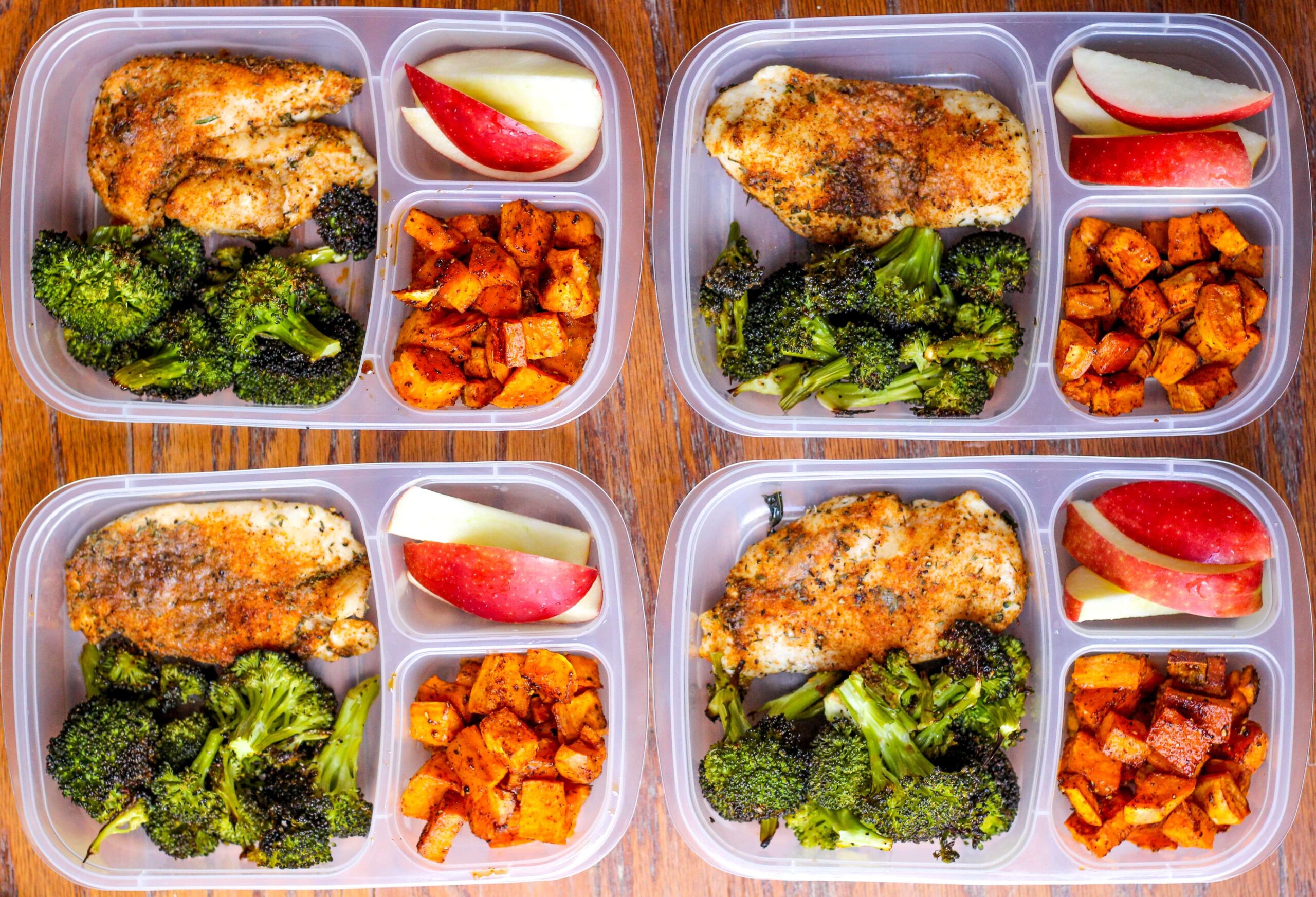
Before discussing the strategies and the detailed steps, let’s start with the basics: why does meal prepping matter?
- Time Management: In a world where most people juggle work, family, and personal hobbies, time is extremely valuable. Meal prepping can save you hours during the week because you prepare multiple meals at once rather than starting from scratch every day.
- Health and Nutrition: Pre-prepared meals often discourage unhealthy snacking and reduce temptation to reach for junk food. When you have nutritious, portion-controlled meals ready, you are more likely to stick to a balanced eating plan.
- Financial Savings: Eating out or ordering takeout frequently can quickly drain your wallet. By planning and cooking your meals in advance, you can buy ingredients in bulk, reduce food waste, and ultimately spend less money on daily meals.
- Peace of Mind: Knowing exactly what you will eat each day lifts a huge mental burden. You won’t need to scramble for last-minute meal ideas or stress about the time and effort it takes to cook something nutritious when you’re already tired.
Meal prepping ultimately helps you stay organized, healthy, and stress-free. It’s one of the most practical ways to invest in your well-being and free up precious time that can be spent doing the things you love.
2. Common Challenges Without Meal Prepping

To really appreciate the advantages of meal prepping, it’s essential to recognize the hurdles you might face without it:
- Impulsive Eating Decisions
When you’re starving after a long day, cooking from scratch can feel daunting. This often leads to impulsive choices such as ordering pizza, drive-through meals, or microwaving processed frozen foods. - Financial Drain
Eating out frequently or even buying high-priced snacks every day can accumulate. On average, preparing meals at home is significantly less expensive than purchasing them at restaurants or via takeout. - Wasted Ingredients
Without a well-thought-out plan, you might buy perishable items—vegetables, fruits, meats—that spoil before you’ve had a chance to use them. This leads to unnecessary waste. - Stress and Anxiety
The daily stress of “What’s for dinner?” can wear on you mentally. Without planning ahead, mealtime can become a source of frustration, negatively affecting your overall mood. - Inconsistent Nutrition
Inconsistent meal planning often leads to missed nutrients, portion distortions, and, in some cases, unhealthy snacking or binge-eating. You may struggle to maintain a balanced diet.
Understanding these challenges provides clear motivation for why meal prepping should be a staple in your weekly routine. The remainder of this article will empower you with the knowledge and hacks you need to address these issues proactively.
3. Key Benefits of Meal Prepping
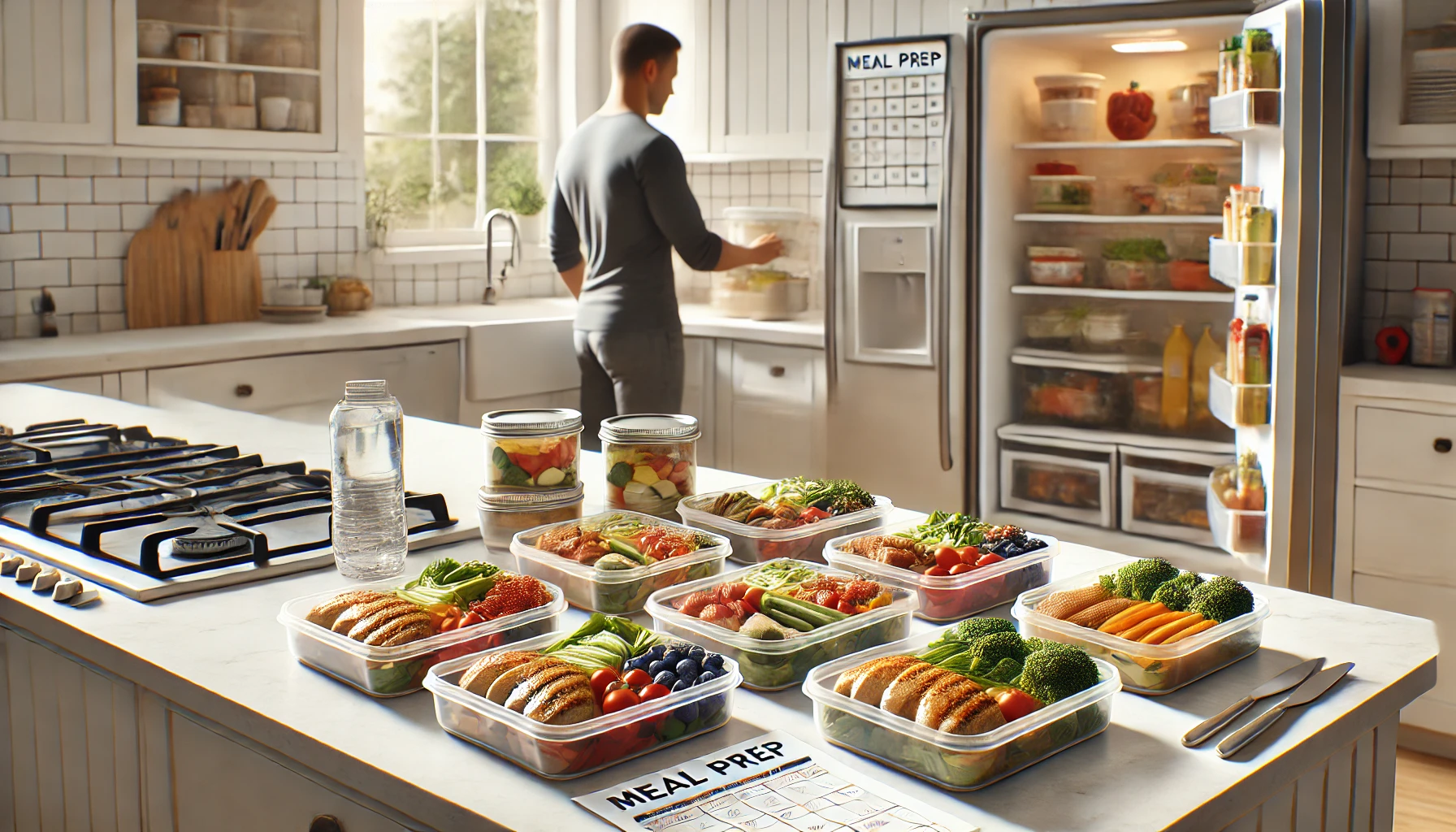
3.1 Saving Time
- Eliminate Daily Cooking: By setting aside a specific block of time to cook a week’s worth of meals, you essentially free up your weekdays. Instead of cooking each day, you just heat up your pre-prepared food.
- Reduced Cleanup: When you batch-cook, you only wash dishes and clean up once (or twice) per week rather than after every single meal. This can add up to hours saved over seven days.
3.2 Boosting Nutritional Intake
- Portion Control: It’s much easier to stick to recommended serving sizes when you measure them out ahead of time. Overeating becomes less likely if your meals are properly portioned.
- Balanced Meals: Pre-planning helps ensure you include adequate proteins, healthy fats, complex carbs, and essential vitamins and minerals. You can also track and adjust your macronutrients with greater accuracy when you meal prep.
3.3 Cost Efficiency
- Bulk Purchasing: By buying in bulk, especially for staple items like rice, beans, and chicken, you often get better deals and reduce packaging waste.
- Minimized Food Waste: Planning each dish in advance makes it more likely you’ll use all the ingredients you buy. This helps you save money over time while also cutting down on waste.
3.4 Stress Reduction
- Peace of Mind: If you know you have healthy meals ready, you won’t have to worry about cooking at the end of a long day.
- Consistent Eating Schedule: You’re more likely to eat at regular intervals, reducing dips in energy levels and mood swings.
By now, it should be crystal clear that meal prepping is more than just a fad; it’s a lifestyle shift that can significantly impact your overall well-being.
4. The Basics of Meal Prepping
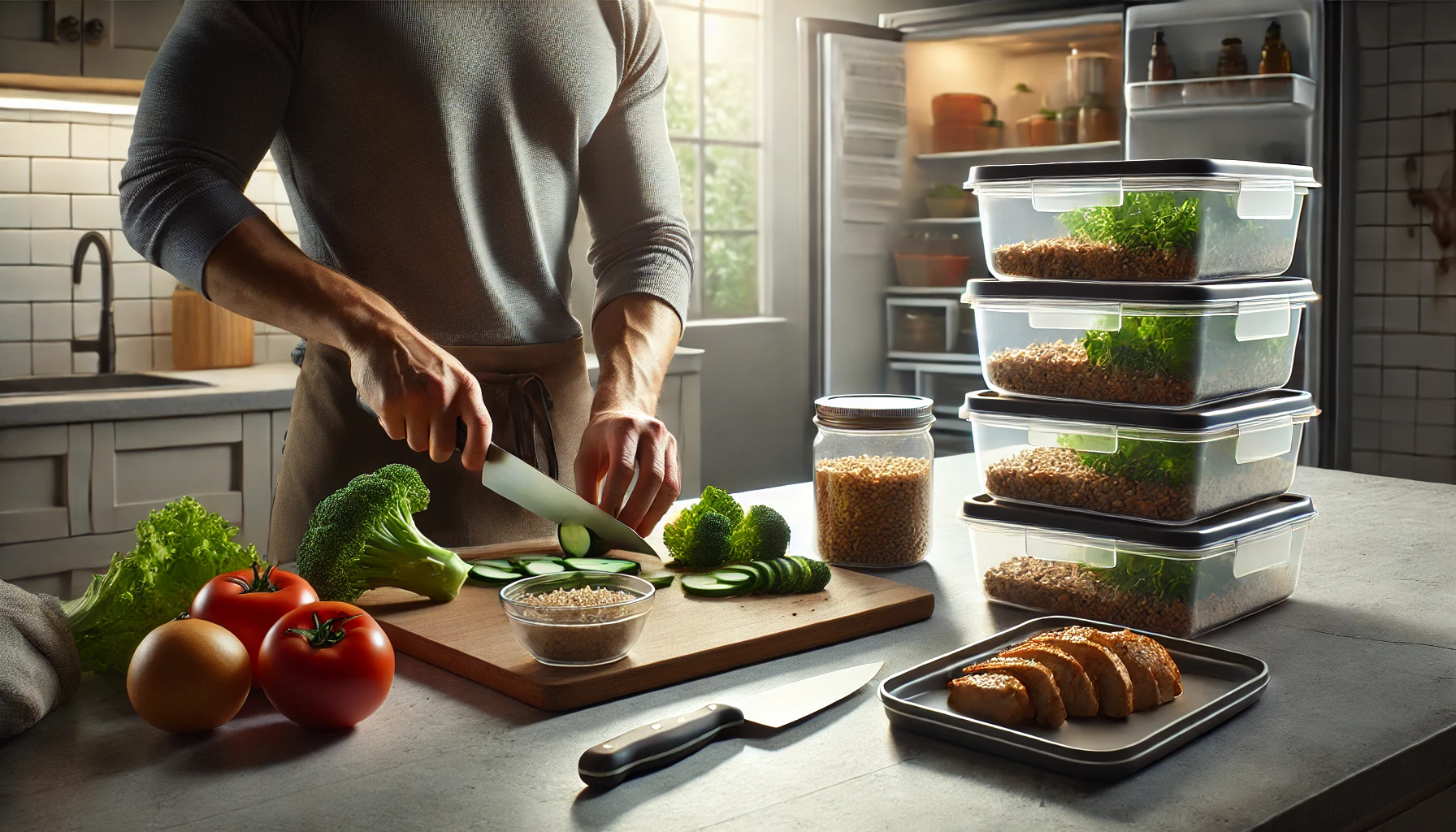
Meal prepping is essentially the art of planning and preparing multiple meals at once, to be eaten over the course of several days. Here are the fundamental concepts:
- Meal Planning: Decide what you’ll be eating in the coming week. This includes breakfast, lunch, dinner, and snacks.
- Grocery Shopping: Purchase everything you need in one or two trips.
- Batch Cooking: Cook in large batches, focusing on versatile ingredients that can be mixed and matched.
- Storage: Portion out meals into reusable containers, label them, and store them in your refrigerator or freezer.
- Reheat and Eat: Each day, simply grab a pre-portioned container, reheat (if necessary), and enjoy a home-cooked meal.
While these steps seem straightforward, the details matter, which we’ll cover in-depth in the following sections.
5. Equipment and Tools You’ll Need
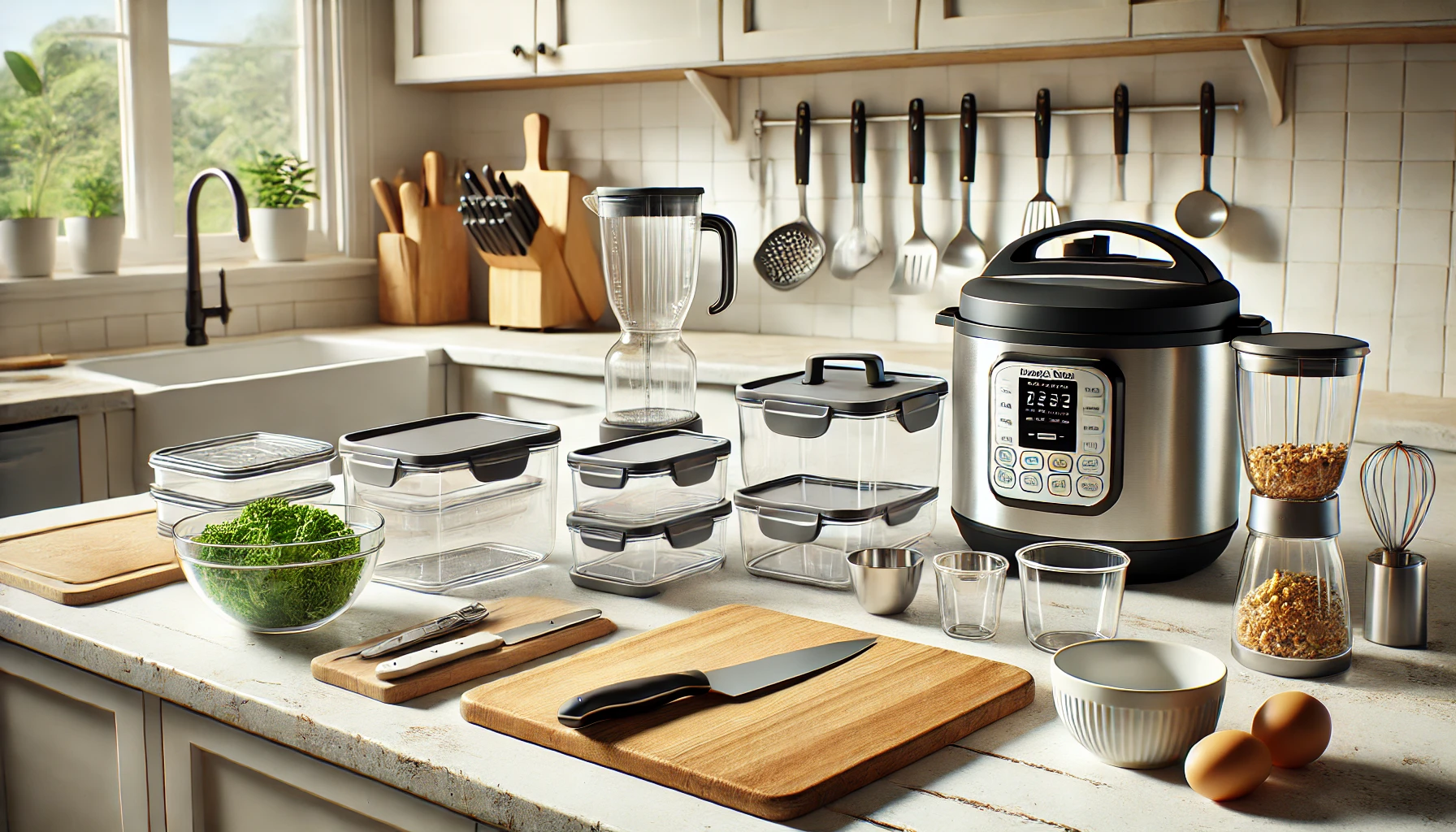
To optimize your meal prep process, you’ll need some essential gear. Having the right equipment can streamline cooking, improve storage, and maintain food quality.
5.1 Basic Kitchen Tools
- Knives: A chef’s knife, a paring knife, and maybe a serrated bread knife. Sharp knives speed up chopping and slicing significantly.
- Cutting Board: Preferably two—one for vegetables and another for meats to avoid cross-contamination.
- Measuring Cups and Spoons: For precise measurements, especially when you’re calorie-counting or tracking macros.
- Mixing Bowls: A variety of sizes to help with mixing salads, marinating meats, etc.
- Cooking Utensils: A spatula, a wooden spoon, tongs, and a ladle.
5.2 Cookware
- Pots and Pans: At least one large pot, a medium pot, and a non-stick skillet or pan.
- Baking Sheets: For roasting vegetables, baking chicken, and preparing sheet-pan meals.
- Casserole Dishes: Useful if you plan on prepping casseroles, lasagnas, or one-dish bakes.
5.3 Meal Prep Containers
Choosing the right containers is crucial. Options include:
- Glass Containers: Sturdy, easy to clean, and healthier (no chemicals leaching). Great for microwave or oven reheat, but heavier to carry.
- BPA-Free Plastic Containers: Lighter and more affordable, but not always suitable for high-heat oven use. Check if they’re microwave-safe.
- Mason Jars: Perfect for salads (layering keeps vegetables fresh) and overnight oats.
Consider choosing containers with airtight lids to maintain freshness. If you plan on freezing meals, make sure your containers are freezer-safe.
5.4 Other Useful Tools
- Slow Cooker or Instant Pot: Ideal for one-pot meals, soups, stews, and set-it-and-forget-it batch cooking.
- Food Processor: Speeds up chopping, dicing, blending, and pureeing.
- Blender: For smoothies, soups, or sauces.
- Kitchen Scale: If you’re closely monitoring portion sizes or macronutrient intake.
- Label Maker or Masking Tape: Helps you keep track of the contents and dates on your containers.
Having these tools on hand will make your meal prepping journey far more efficient and enjoyable.
6. Proper Food Storage & Safety
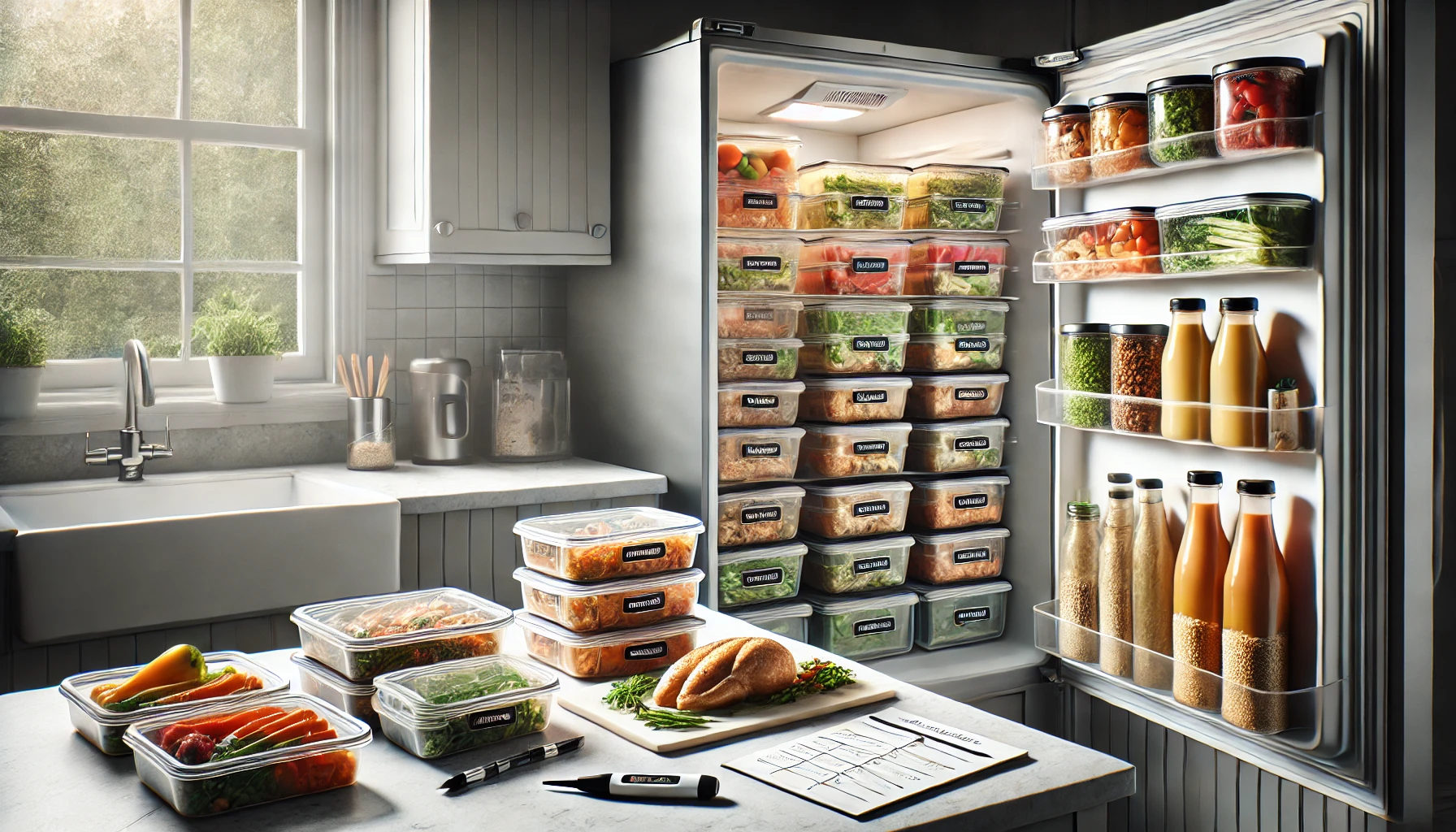
Food safety is non-negotiable. To prevent spoilage, food poisoning, and nutrient loss, follow these guidelines:
6.1 Food Cooling and Temperature Control
- Cool Rapidly: After cooking, let your food cool briefly (no more than 1 hour) before refrigerating or freezing. Storing hot food directly in the refrigerator or freezer can cause temperature fluctuations and compromise the safety of other items.
- Temperature Range: Bacteria grows most rapidly between 40°F (4°C) and 140°F (60°C). Keep cooked and perishable foods out of this “danger zone” whenever possible.
6.2 Freezing vs. Refrigerating
- Refrigerating: Most cooked meals (e.g., meats, vegetables, grains) stay safe for up to 3-5 days in the fridge.
- Freezing: Foods stored properly in the freezer can remain safe indefinitely, but flavor and texture are best within 2-3 months.
6.3 Proper Labeling
- Date Everything: Use labels or markers to note the date you prepared and stored each container. This ensures you know exactly how old the food is and helps you prioritize which meals to eat first.
- Ingredient List: If you’re prepping multiple variations, labeling containers with the name of the dish or key ingredients can prevent mix-ups.
6.4 Defrosting and Reheating
- Safe Thawing Methods: Ideally, transfer frozen meals to the refrigerator the night before. If you’re short on time, use the microwave’s defrost function.
- Reheat Thoroughly: Warm your meals to at least 165°F (74°C) to eliminate harmful bacteria.
By adhering to these food safety practices, you’ll preserve flavor, texture, and the nutritional integrity of your meals while ensuring they’re safe to eat.
7. How to Plan Your Weekly Meals

Planning your meals is an art and a science. Here’s a step-by-step breakdown:
7.1 Assess Your Week
- Identify Busy Days: If you have particularly hectic days, plan for meals that are quick to reheat or even cold meals like salads or wraps.
- Account for Special Events: If you’re going out or attending social gatherings, you may need fewer prepped meals that week.
7.2 Define Your Meals
- Breakfast: Consider if you need a quick grab-and-go meal (like overnight oats or egg muffins) or if you prefer something you can reheat at home.
- Lunch: For work or school lunches, prioritize portable and easy-to-eat meals.
- Dinner: Dinners can be slightly more elaborate but should still be efficient to reheat or assemble.
- Snacks: Pre-cut fruits, portioned nuts, or yogurt cups help curb hunger between meals.
7.3 Select Your Recipes
- Variety: Aim for a diverse range of proteins (chicken, beans, fish, tofu), carbs (rice, quinoa, sweet potatoes), and vegetables to avoid flavor fatigue.
- Complex vs. Simple: Balance complex recipes (like casseroles, curries) with simpler ones (like sheet-pan meals or salads) so you don’t spend all day cooking.
7.4 Make a Grocery List
- Categorize by Department: Group items by produce, meat, dairy, grains, etc., to streamline shopping.
- Check Pantry First: Don’t forget to use what you already have before buying new items. This reduces waste and saves money.
7.5 Schedule Prep Time
- Dedicated Time Slot: Choose a consistent day (often Sunday) to prepare the bulk of your meals.
- Break It Up: If a single day is too overwhelming, split meal prep tasks across two days (e.g., Sunday and Wednesday).
7.6 Example of a Simple Weekly Plan
- Breakfast (Mon-Fri): Overnight oats with berries or scrambled eggs with spinach and cheese.
- Lunch (Mon-Wed): Chicken, brown rice, and broccoli bowls.
- Lunch (Thurs-Fri): Turkey chili in a thermos or tofu stir-fry with mixed veggies.
- Dinner (Mon-Fri): A mix of fish, ground turkey, or a vegetarian dish like lentil curry, paired with roasted vegetables and a carbohydrate source like quinoa.
Having a plan not only keeps you focused but also makes grocery shopping more efficient.
8. Choosing Nutritious Ingredients
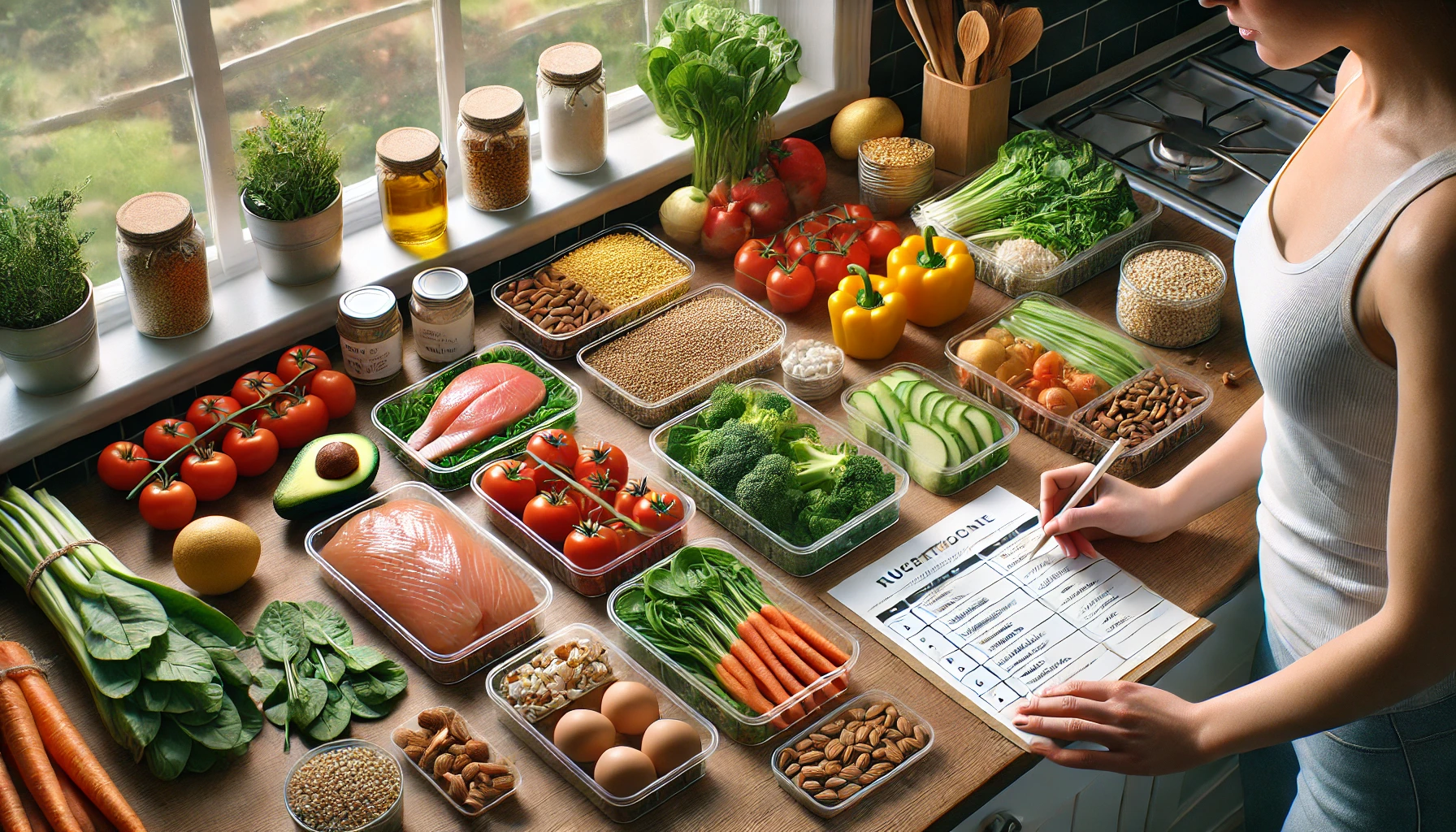
The key to boosting your nutritional intake lies in the selection of wholesome foods. You don’t necessarily have to eliminate all your favorite treats, but focusing on nutrient-dense items can greatly improve your health outcomes.
8.1 Whole Grains
- Examples: Brown rice, quinoa, oats, whole-wheat pasta, barley.
- Why They Matter: Whole grains contain more fiber, vitamins, and minerals than refined grains. Fiber supports digestion and keeps you full longer.
8.2 Lean Proteins
- Examples: Chicken breast, turkey, fish, tofu, tempeh, lentils, beans, low-fat dairy (if you consume dairy).
- Why They Matter: Protein is essential for muscle repair, enzyme function, and overall bodily health. Choose lean sources to reduce saturated fat intake.
8.3 Fruits and Vegetables
- Examples: Broccoli, spinach, carrots, bell peppers, zucchini, berries, apples, oranges.
- Why They Matter: They provide essential vitamins, minerals, and antioxidants that bolster your immune system, support healthy digestion, and more.
8.4 Healthy Fats
- Examples: Avocados, nuts, seeds, olive oil, fatty fish (salmon, mackerel).
- Why They Matter: Fats are crucial for hormone regulation, energy storage, and the absorption of fat-soluble vitamins (A, D, E, K).
8.5 Adequate Hydration
- Examples: Water, infused waters, herbal teas, low-sugar smoothies.
- Why It Matters: Staying hydrated optimizes digestion, circulation, and overall energy levels.
When selecting these items, try to choose organic or locally sourced products when possible to reduce exposure to pesticides and support local farmers. However, eating a non-organic carrot is far better than eating no carrot at all. Balance your choices with your budget.
9. Batch Cooking Strategies
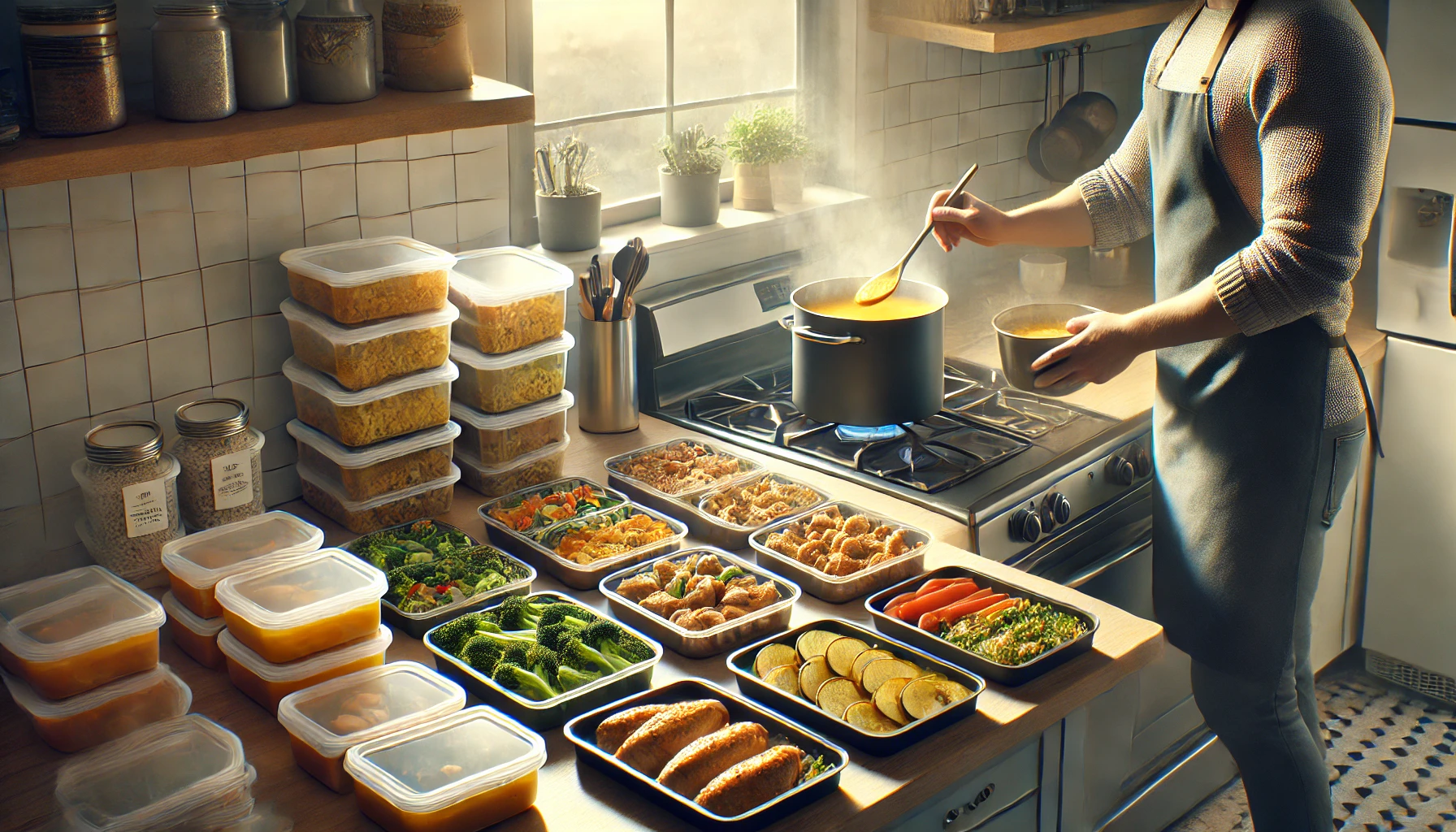
Batch cooking is the heart of meal prepping. It involves cooking large quantities of one or more recipes to be portioned out for later use.
9.1 One-Pot Meals
- Examples: Chili, stew, soup, curry.
- Benefits: Fewer dishes to wash, can easily be portioned into multiple servings, flavors often deepen over time.
9.2 Sheet Pan Dinners
- Examples: Chicken and vegetables, salmon and asparagus, tofu with mixed vegetables.
- Benefits: Simple cleanup, everything cooks evenly, and it’s easy to make large quantities.
9.3 Bulk Protein Prep
- Examples: Grilled chicken breasts, turkey burgers, baked tofu, roasted chickpeas.
- Benefits: You can mix and match these proteins with different sides and sauces throughout the week.
9.4 Cooking in Phases
- Phase 1: Chop all vegetables and marinate proteins.
- Phase 2: Start cooking longer items first (e.g., brown rice, whole chickens).
- Phase 3: Cook quicker items like vegetables, fish, or eggs last.
- Phase 4: Assemble or portion out meals and store them properly.
9.5 Using Slow Cookers or Instant Pots
- Tips: Dump ingredients in the morning, set a timer, and come home to a fully cooked dish. Great for shredded chicken, pulled pork, or robust soups.
- Meal Options: Overnight oats, soups, stews, or even desserts (e.g., slow-cooker cobblers).
By choosing the right method, you can maximize your meal prep efficiency and create a variety of dishes to keep you satisfied all week.
10. Meal Prep for Different Diets
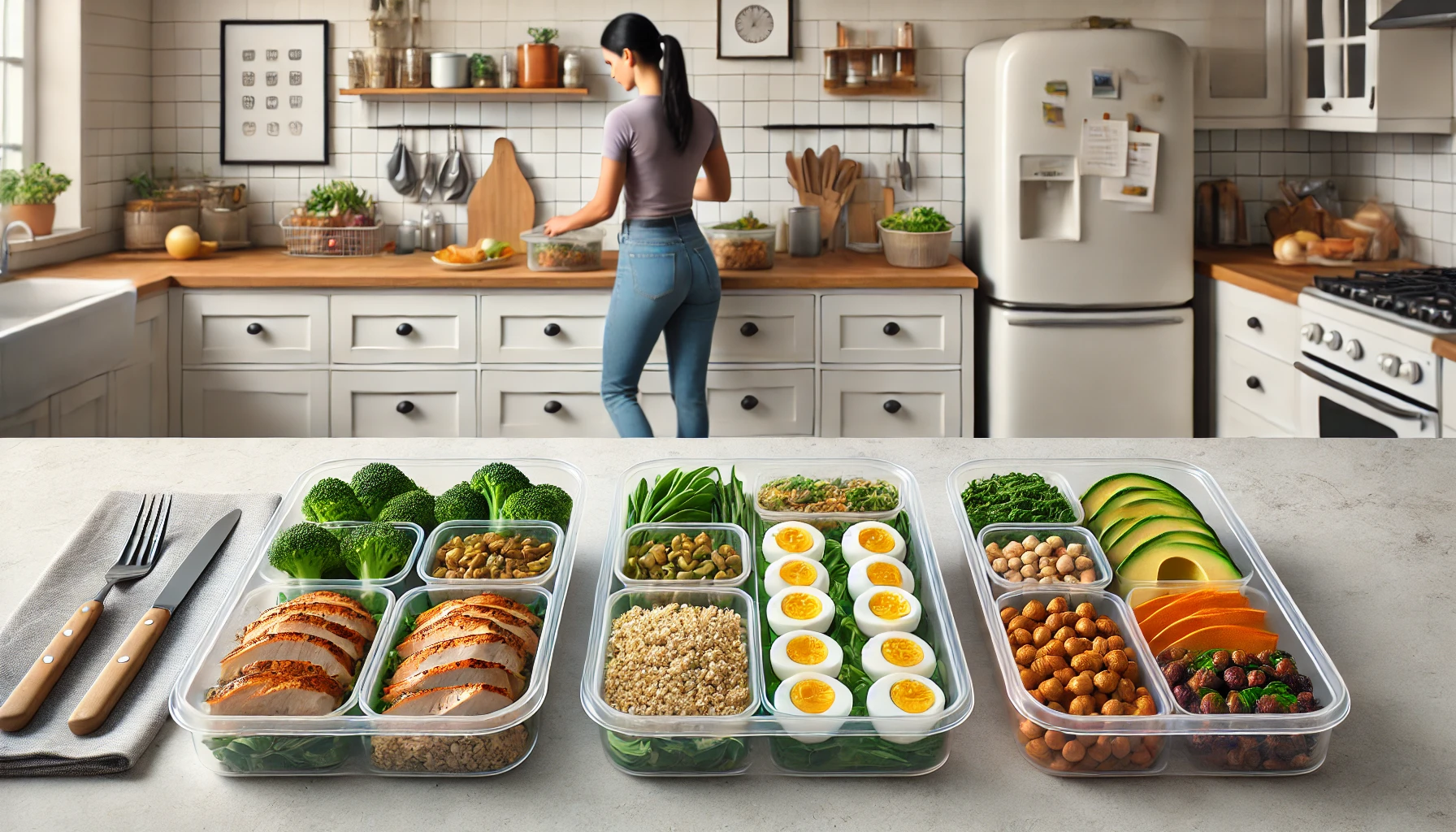
Meal prepping isn’t a one-size-fits-all strategy—dietary needs and preferences vary widely. Here’s how you can adapt meal prepping to different eating styles.
10.1 Vegetarian and Vegan Meal Preps
- Proteins: Beans, lentils, tofu, tempeh, seitan, chickpeas, and peas are great protein sources.
- Variety: Rotate different legumes and soy products to prevent boredom.
- Key Considerations: Make sure you’re consuming enough iron, calcium, vitamin B12 (especially for vegans), and protein.
Example Meal: Chickpea and spinach curry served with brown rice and roasted cauliflower.
10.2 Keto and Low-Carb Meal Preps
- Key Foods: Focus on high-fat, moderate-protein, and very low-carb vegetables.
- Proteins: Fatty fish (salmon), chicken thighs, ground beef, eggs.
- Vegetables: Leafy greens, zucchini, broccoli, cauliflower.
- Fats: Coconut oil, butter, cheese, avocado, nuts, and seeds.
Example Meal: Cauliflower rice stir-fried with chicken, broccoli florets, and a creamy coconut sauce.
10.3 Paleo Meal Preps
- Key Foods: Lean meats, fish, fruits, vegetables, nuts, and seeds.
- Excluded: Grains, legumes, dairy, refined sugars, and processed foods.
- Preparation Tips: Zoodles (zucchini noodles) and cauliflower “rice” can replace traditional grains.
Example Meal: Baked salmon with sweet potato wedges and a side of sautéed spinach.
10.4 Gluten-Free Meal Preps
- Key Foods: Naturally gluten-free grains (brown rice, quinoa, buckwheat), meats, vegetables, fruits, dairy, and legumes.
- Label Reading: Verify sauces, spices, and condiments to ensure they’re gluten-free.
- Cross-Contamination: Use separate cutting boards and utensils if cooking for both gluten-containing and gluten-free eaters.
Example Meal: Chicken fajitas with bell peppers and onions served with gluten-free tortillas or brown rice.
No matter what your dietary restrictions are, the principles of meal prepping—planning, cooking in batches, and proper storage—remain the same.
11. Common Meal Prep Mistakes & How to Avoid Them
Meal prepping can be incredibly beneficial, but like any process, it comes with a learning curve. Here are some pitfalls and how to steer clear of them:
- Prepping Too Much Food
- Mistake: Cooking a massive amount of meals without a realistic plan to consume them before they spoil.
- Solution: Start with fewer meals if you’re a beginner. Freeze leftovers or extra portions that won’t be eaten within a few days.
- Lack of Variety
- Mistake: Making the same dish for breakfast, lunch, and dinner for five days straight.
- Solution: Try batch cooking multiple recipes in smaller quantities. Alternate different proteins and veggies.
- Ignoring Nutritional Balance
- Mistake: Preparing meals that are too carb-heavy or lack sufficient protein and fiber.
- Solution: Use a template (e.g., 50% veggies, 25% protein, 25% carbs) or track macros to ensure a balanced approach.
- Inadequate Storage Practices
- Mistake: Storing hot food immediately in the fridge or mixing raw and cooked foods.
- Solution: Cool foods quickly and store them in airtight containers labeled with dates.
- Improper Reheating
- Mistake: Not reheating meals thoroughly, risking food-borne illness.
- Solution: Reheat until steaming hot or use a food thermometer to ensure internal temperature reaches at least 165°F (74°C).
- Being Overly Ambitious
- Mistake: Trying complicated gourmet recipes for every single meal, leading to burnout.
- Solution: Pick a few simple, staple recipes you enjoy and gradually introduce new dishes.
Learning from these mistakes will save you time, money, and frustration in the long run.
12. Sample Weekly Meal Prep Plan
Here’s a detailed 7-day plan that you can use as a template. Each meal focuses on balance, variety, and ease of preparation.
Sunday (Prep Day)
- Morning: Grocery shopping for the week.
- Afternoon:
- Cook a large pot of brown rice.
- Roast a tray of chicken breasts seasoned with olive oil, salt, pepper, and herbs.
- Roast a variety of vegetables (broccoli, carrots, bell peppers) on a sheet pan.
- Prepare a batch of overnight oats for breakfasts.
- Whip up a simple marinade and marinate tofu or fish (if you’re alternating proteins).
- Prepare a pot of lentil soup.
Store these items in separate containers, label them, and place in the fridge.
Monday
- Breakfast: Overnight oats topped with fresh berries and a drizzle of honey.
- Lunch: Brown rice, roasted chicken, and roasted vegetables. Add a sprinkle of cheese or a sauce (like tzatziki or pesto) if desired.
- Dinner: Lentil soup with a side salad (pre-washed greens, cherry tomatoes, and balsamic dressing).
Tuesday
- Breakfast: Repeat overnight oats, or try yogurt with fruit and granola.
- Lunch: Tofu (marinated and baked), brown rice, and leftover roasted veggies. Add a side of fresh cucumber slices.
- Dinner: Stir-fried chicken and bell peppers in a teriyaki sauce over leftover brown rice.
Wednesday
- Breakfast: Veggie omelet (quick to make if you have pre-chopped veggies) with a side of whole wheat toast.
- Lunch: Lentil soup in a thermos, plus a piece of fruit.
- Dinner: Make a quick pasta using leftover roasted veggies and protein. Top with a simple tomato sauce.
Thursday
- Breakfast: Overnight oats or a smoothie made with spinach, banana, peanut butter, and almond milk.
- Lunch: Grilled chicken (reheated) over a spinach salad with roasted vegetables. Top with balsamic vinegar and olive oil.
- Dinner: Baked fish (if marinated earlier) with lemon and herbs, served with leftover brown rice and steamed broccoli.
Friday
- Breakfast: Whole grain pancakes or French toast (pre-batched batter) with fruit.
- Lunch: Veggie burrito bowl using leftover rice, beans, sautéed onions, and bell peppers. Top with salsa, cheese, and avocado slices.
- Dinner: Lentil soup (if any left) or a quick veggie stir-fry.
Saturday
- Breakfast: Smoothie bowl (blend leftover fruits, top with granola and nuts).
- Lunch: Leftovers from the week.
- Dinner: Use up any remaining proteins and vegetables. A quick stir-fry or sheet-pan meal is a good option.
Sunday
- Repeat: Grocery shop, plan the following week, and meal prep again.
By following a weekly cycle, you’ll develop a consistent rhythm that makes meal prep second nature.
13. Time-Saving Tips and Hacks
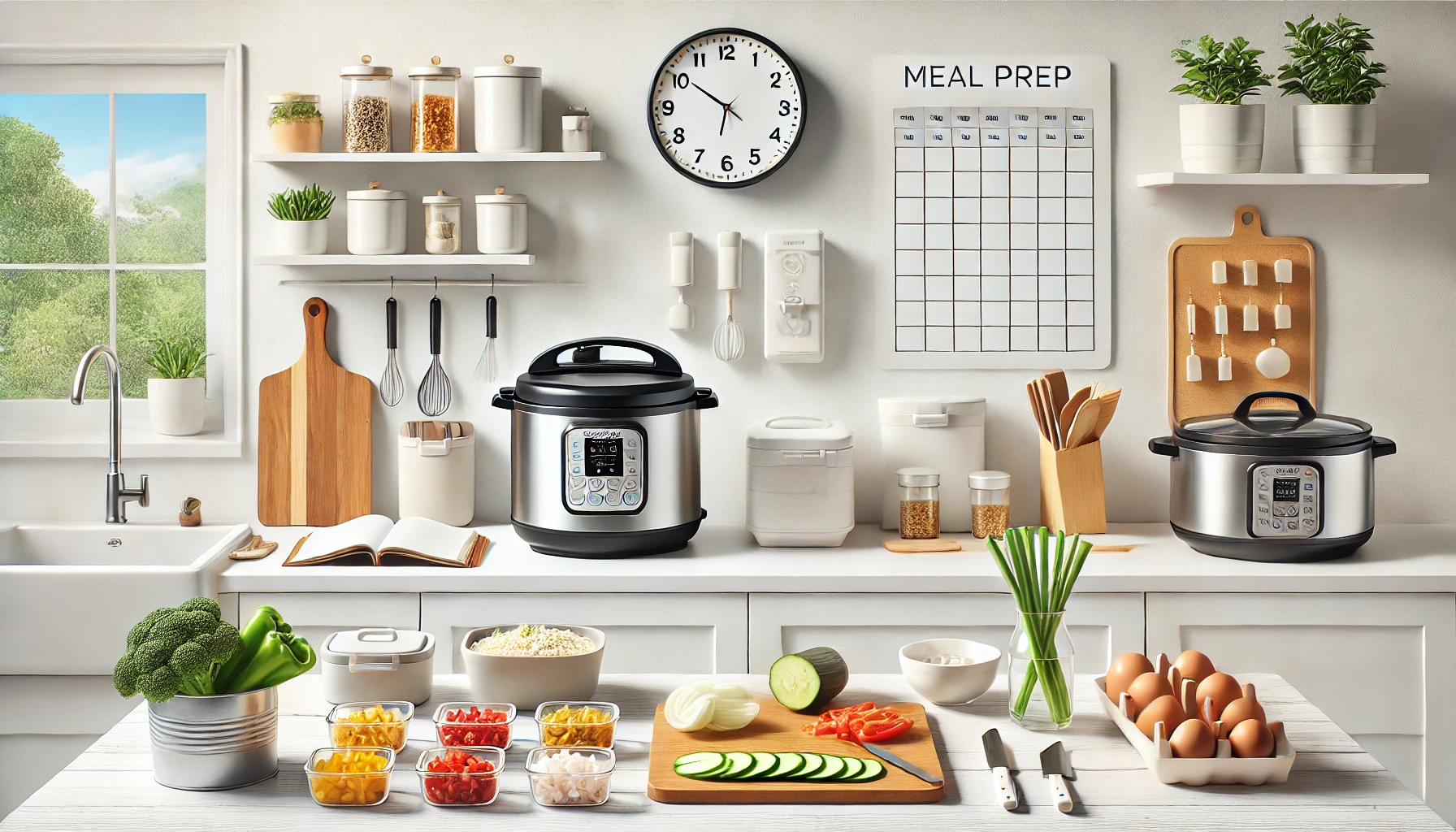
Meal prepping can be made even more efficient with a few strategic hacks:
- Use a Grocery Delivery Service
- This can save hours each week, especially if you have a busy schedule.
- Prep Ingredients in Bulk
- Instead of chopping one onion, chop several onions at once and store them in the fridge or freezer.
- Do the same for other commonly used ingredients like garlic, carrots, or bell peppers.
- Opt for Pre-Cut Produce
- If you’re extremely pressed for time, buying pre-washed and pre-cut vegetables can be a lifesaver, though it may cost a bit more.
- Cook Double Portions
- Whenever you cook dinner, make extra. That extra portion can be tomorrow’s lunch.
- Invest in Time-Saving Tools
- A quality food processor, sharp knives, and efficient cookware can drastically cut down prep and cook times.
- Declutter Your Kitchen
- An organized, clutter-free kitchen helps you find what you need quickly, reducing meal prep time.
- Focus on Simple Recipes
- Elaborate recipes are fine occasionally, but for consistent meal prepping, simple is usually better.
By applying these hacks, you’ll streamline your workflow and maintain consistency, even on your busiest weeks.
14. Maintaining Variety in Your Meals
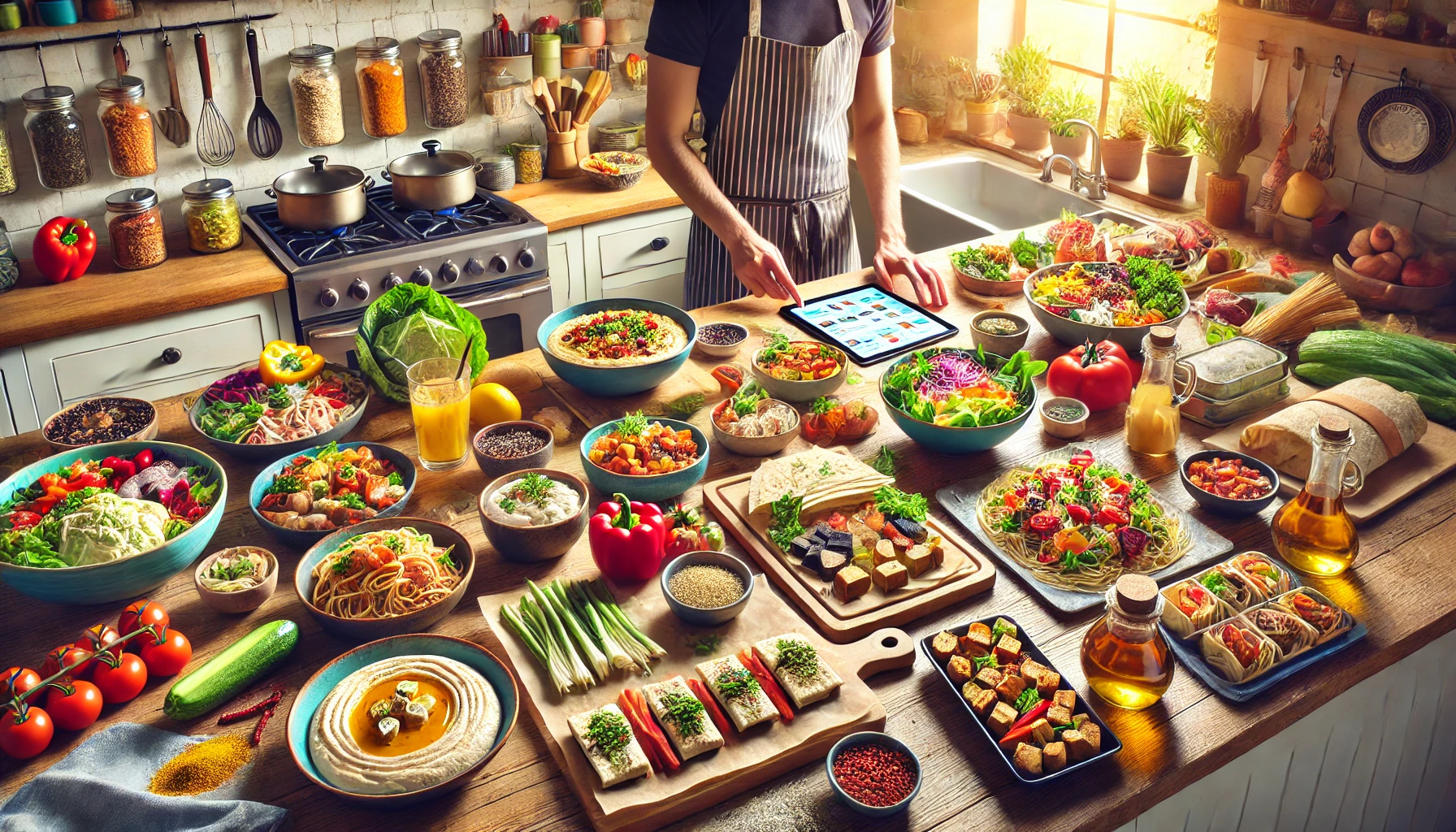
One of the biggest complaints about meal prepping is the potential monotony of eating the same meals every day. Here’s how to keep things interesting:
14.1 Vary Your Seasonings and Sauces
- Seasoning Blends: Rotate between Italian seasoning, Cajun spices, curry powders, and more.
- Sauce Variety: Experiment with pesto, peanut sauce, sriracha mayo, tzatziki, and various salad dressings.
14.2 Alternate Proteins
- Within the Same Dish: Make chicken burrito bowls one week and then switch to a plant-based burrito bowl the next.
- Pair Up: If you’re making a soup, choose different proteins each time (e.g., chicken, turkey sausage, lentils).
14.3 Experiment with Cooking Methods
- Roasting vs. Grilling vs. Steaming: The same vegetable can taste completely different depending on how it’s prepared.
- Kitchen Gadgets: Use an air fryer for a crispy texture, slow cooker for stews, or a pressure cooker for fast soups.
14.4 Incorporate Seasonal Produce
- Seasonal Eating: Foods that are in season are often cheaper, fresher, and tastier.
- Try New Fruits and Veggies: Challenge yourself to use at least one new or less familiar ingredient each week.
14.5 Rotate Cuisines
- Global Inspiration: Explore Mexican, Italian, Thai, Indian, and other global cuisines for diverse flavors.
- Fusion Dishes: Get creative by combining elements from different cuisines.
By intentionally mixing things up, you’ll never get bored—and you’ll keep your palate excited to try new things.
15. Conclusion & Next Steps
Meal prepping is more than just a trend; it’s an organized, health-forward lifestyle choice that can save you time, money, and stress while boosting your overall nutritional intake. Whether you’re a busy professional, a parent juggling multiple responsibilities, or a student trying to navigate hectic schedules, the principles of meal prepping can help you maintain a balanced diet without sacrificing precious hours in the kitchen.
To get started, follow these next steps:
- Set Clear Goals: Decide what you want to achieve—weight loss, muscle gain, cleaner eating, or simply more free time.
- Plan Your Meals: Create a weekly meal plan that aligns with your goals, focusing on balance and variety.
- Organize Your Kitchen: Stock up on essential tools, declutter, and have your meal prep containers ready.
- Batch Cook Efficiently: Pick a day (or two) to do the bulk of your cooking. Use methods like sheet-pan dinners, one-pot meals, or slow cookers for maximum efficiency.
- Stay Flexible: Be prepared to adjust your plan based on changing schedules, seasonal ingredients, or dietary needs.
- Monitor and Refine: Keep track of what works for you and what doesn’t. Adjust portion sizes, experiment with new recipes, and refine your approach as you go.
Final Thought
Meal prepping is a journey. You may start with a simple plan—like prepping just your lunches for the week—and gradually scale up as you get more comfortable. The key is to remain adaptable, stay motivated, and enjoy the process of experimenting with new flavors. Over time, you’ll find that meal prepping becomes second nature, and the benefits—savings in time, money, and improved health—will be your greatest rewards.
By incorporating these insights and strategies into your routine, you’ll be well on your way to mastering the art of meal prepping. Whether your goal is to lose weight, build muscle, or simply lead a more organized life, the hacks outlined here will ensure you’re set up for success. Embrace the journey, get creative, and watch as your kitchen becomes a place of nourishment, efficiency, and delicious possibilities.
Start your meal prep journey today and experience firsthand how a little organization and planning can revolutionize your eating habits and overall well-being. Bon appétit!

